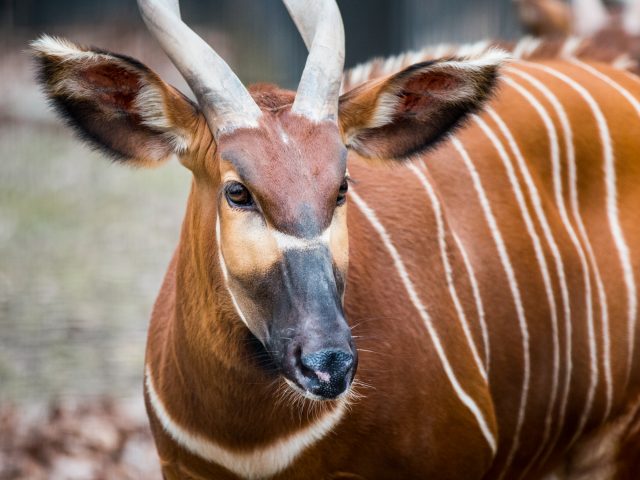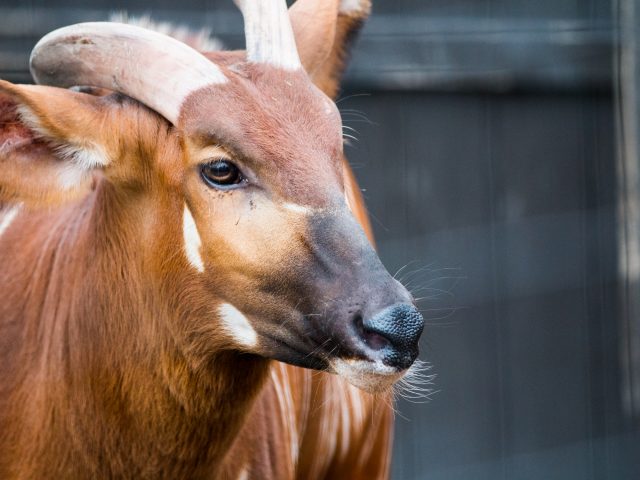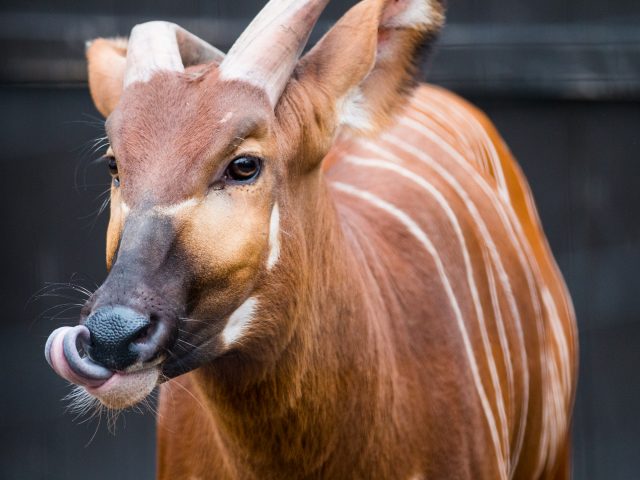Characteristics
The largest of forest antelopes, bongos have a stunning chestnut-color coat with an average of 12-14 narrow white stripes. The animal has two heavy, slightly-spiraled horns that are hollow and made of keratin. Bongos can run quickly and gracefully through thick forest cover. They tilt their head up, which causes their horns to lie flat along their back so that brush doesn’t impede their flight. While western bongos are more common, eastern (or mountain) bongos are critically endangered and only found in one remote region of central Kenya. Bongos require a large amount of fresh food year-round, so they are usually found in forests that provide low-level green vegetation.
Behavior
Bongos are shy animals and are easily frightened. Adult males usually live alone, while mothers and their young may form small groups. Bongos are mostly nocturnal, but are sometimes active during the day, too.
Did You Know?
- Bongos are the only Tragelaphus (antelope-like animals) in which both sexes have horns.
- The bongo requires salt in its diet and often visits natural salt licks. They even eat burned wood and lightning-killed trees to obtain salt.
- The animal’s large ears account for why they rely on their hearing more than sight or smell.
Our Animals
We have four bongos at Potter Park Zoo – Uzuri, a female born in 2016 at John Ball Zoo; Zahara (born 2022) and Maeve (born 2023) at Potter Park Zoo. Moose (born 2021) is the zoo’s male bongo from Omaha Zoo.







